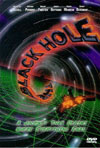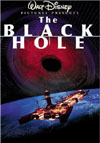Four to Doomsday
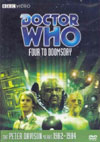 |
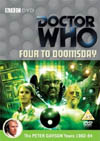 |
 |
DVD NTSC
Region 1




|
DVD PAL
Region 2


|
VHS Video
NTSC


PAL


|
|
(Doctor Who Story No. 118, starring Peter Davison)
- written by Terence Dudley
- directed by John Black
- produced by John Nathan-Turner
- music by Roger Limb
- 4 episodes @ 25 minutes each
|
Story: The TARDIS crew discovers a large
spacecraft due to reach Earth in four days.
Carrying representatives from several lost
and ancient races of the Earth, the seemingly
good-humoured alien Monarch in command of the
craft soon reveals delusions of god-hood
and ominous plans for the remaining humans on Earth.
|
|
DVD Extras include:
- Audio commentary by Peter Davison (The Doctor),
Sarah Sutton (Nyssa),
Janet Fielding (Tegan),
Matthew Waterhouse (Adric),
and director John Black.
- Raw Studio Footage from Peter Davison's 1st day (27 minutes)
- December 1980 Peter Davison interview from "Saturday Night at the Mill" (14 min.)
- Theme Music Video (3 min.) with stereo and Dolby Digital 5.1 sound options
- Pop-up Production Note Subtitles
- Photo Gallery (6 min.)
Buyers' Guide Review
by Martin Izsak
|
|
(A more in-depth analysis, containing "SPOILERS" and intended
for those who have already seen the program, can be accessed
here.)
|
I've always been mildly surprised at the amount of disdain floating
around for this story, which I find to be one of the most enjoyable and
rewarding of season 19. I'm even more surprised that I've never found
anyone else that recognizes what must have been the biggest influence
on it. This is, in fact, a thinly-disguised small-screen version of
Walt Disney's "The Black Hole" (1979), also one of my favourite movies.
Either that, or both "The Black Hole" and "Four to Doomsday" were copying
some other identical source.
I'm not sure why the production saw fit to open by panning across
a drawing of a spacecraft, which might have worked better had it clearly
been an ancient hieroglyphic. But two very excellent shots of a model
spacecraft then follow to establish the setting satisfactorily, CSO'd
onto a proper starry sky. Nice. Once inside, we get an atmospheric
shot of a very interesting and mysterious lab, in which the TARDIS
materializes.
This story gets full marks for its introduction of the TARDIS
and the series' main characters. The relationship between the interior
and exterior is made clear through the scanner screen and the liberal
movement of our four travelers in and out of it during episode one.
The four characters also manage to successfully recreate the atmosphere
of family exploration not really seen on Doctor Who since the black and
white episodes of the sixties. Very excellent.
Their environment thankfully gives them plenty to explore, firstly
with its floating monopticons, technological mysteries, and wonderfully
atmospheric sound and lighting. "Four to Doomsday" also boasts a delightful
display of culture, with several ancient and "lost" civilizations of Earth
mixing bizarrely with high-tech Urbankan architecture and functionality.
Perhaps most importantly, Peter Davison solidified in this story
as the Doctor, not quite so much as "the fifth Doctor" in whatever way
makes the fifth one different from all the others, but as THE Doctor,
who is the same inside throughout all his adventures. He displays the
characteristics that were sadly missing or subdued in
"Castrovalva" (story no. 117),
and becomes the resourceful problem solver who can see through a situation
and set things right heroically. This is the point at which I realized,
on first viewing, that Peter had taken over from Tom Baker for good,
and that I was going to enjoy it.
Paralleling "THE BLACK HOLE"
|
|
The sheer number of parallels in character and plot between this
story and Walt Disney's "The Black Hole" are staggering, and can help one
appreciate "Four to Doomsday" even more. Without giving away quite as much
as in the
"In-Depth Analysis" version of this review,
here are some of the basic similarities.... The U.S.S. Palomino / TARDIS
discovers the large and seemingly empty U.S.S. Cygnus / Urbankan Ship and
docks, and the TARDIS / Palomino crew come out and investigate. The
large ship turns out to be commanded by the outwardly friendly Monarch
/ Dr. Reinhardt, both of whose secrets are surprisingly similar
and gradually revealed during the middle of the story.
Bigon gets the "Old B.O.B." role, the insider on the larger ship
extremely keen to spill the beans and let the whole backstory out. Nyssa
gets the part of Dr. Kate McRae, the brave heroine, both of whom motivate
a similar action beat in the second half of the story. Tegan
takes over the Ernest Borgnine role of Harry Booth, having the strongest
emotional reactions to the discoveries, and taking very similar action
later in the story.
Once again, everybody picks on Adric and his actions in this one.
I didn't, because I could see he clearly had the Dr. Alex Durant role.
Once you've seen Anthony Perkins play it, you believe it.
The three heroic roles amongst the Palomino crew
are all rolled into our good Doctor, while the role
of the iconic robot villain Maximillian is split into the two Ministers
by Monarch's side: Enlightenment and Persuasion, complete with
very similar finales.
|
To be fair, many chunks of dialogue in the Doctor Who version of
this story weigh in on the clunky and awkward side,
while the cast isn't quite sure what to do with it.
Scenes concerning Adric and Tegan suffer
accordingly. And while the action beats deliver many interesting
set-piece scenes filled with the Doctor's ingenuity and a smattering
of visual beam effects, the beats themselves don't really follow each
other logically or escalate the way one might hope.
But the plusses of this story continue to win me over. Stratford
Johns gives an absolutely enjoyable and genuine performance under his
bizarre green make-up. The exploration beats sustain themselves very
well over the first episodes. The high-tech setting sprinkled with loads
of ancient cultures is exquisite. Visual laser beams abound, another
great plus (thank you Dave Chapman).
|
Music is another big plus in this story. Roger Limb delivers what
is probably his best score ever, from his signature opening, to the
plethora of mysterious exploration cues that work tremendously well,
to Nyssa's hypnotism, and to the final unique action cue.
The story also features many excellent source music pieces, emphasizing
the various cultures, with the Mayan tracks being particular favourites
of mine.
|
Music by Roger Limb and
Special Sound by Dick Mills
"Exploring the Lab" (1:48) and
"Nyssa is Hypnotized" (1:00) are available on:
|
|
Mostly this story simply offers Peter Davison's Doctor numerous
chances to be heroic, knowledgeable, firm and confident in his beliefs,
and to sink his teeth into those aspects of the role and establish himself.
For that it works beautifully.
The pace gets a bit rushed near the very end, and some easy bonus points
are lost when several simple staple effects are skimped on, but the ending
still works quite well.
All in all, this is a good and often overlooked story. Watch it
back to back with "The Black Hole" and draw your own comparisons for
extra enjoyment.
This story is available on DVD and VHS video:
 |
 |
 |
DVD NTSC Region 1

 in the U.S.
in the U.S.

 in Canada
in Canada
| DVD PAL Region 2

 for the U.K.
for the U.K.
|
VHS Video
NTSC

 in the U.S.
in the U.S.
PAL

 for the U.K.
for the U.K.
|
Walt Disney's "The Black Hole" has several incarnations on DVD:
|
|
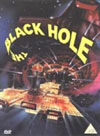 |
|
DVD NTSC Region 1
for the North American market:


|
DVD PAL Region 2
for the U.K.:


|
|
Comments on this article are welcome. You may contact
the author from this page:
Contact page

LYRATEK.COM
|
Read the Buyers' Guide Review for the next story:
"Kinda"

|
|






